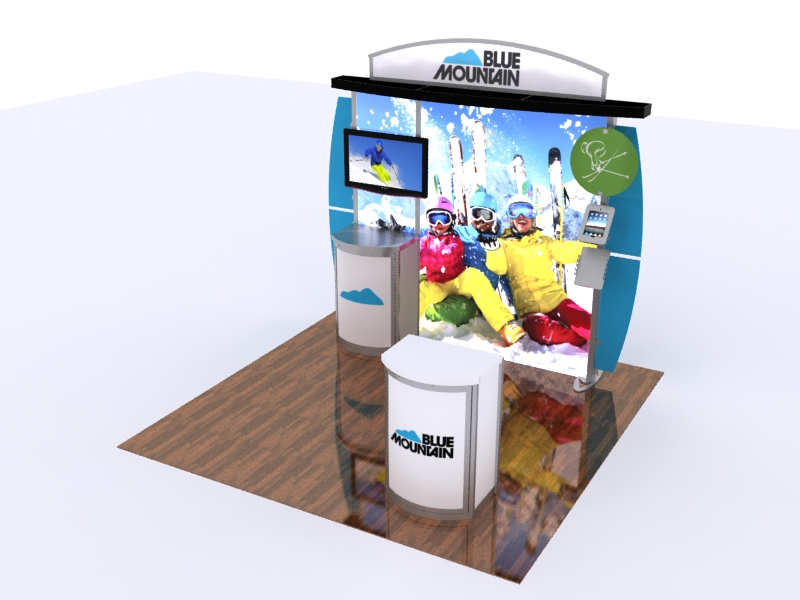It’s not the first time I’ve heard the comment, whether directly or implied.
“Why do exhibits cost so much?”
That question comes up with potential new clients who are in a growing company and want to make a big splash at their next show, so they’re looking at getting a new custom booth.
It also comes up with companies that have been hand-crafting their booths for years, but are ready to have a better look with their brand, along with well-planned and executed storage, meeting, product display and demo areas in the booth.
But when they’re told the price of those potential exhibits, that question lingers: Why do they cost so much? At least that’s their impression. But it is true? Do exhibits really cost a lot?
It’s not a hard conclusion to come to, especially if you’re not familiar with average costs in the exhibit industry. After all, when you learn that companies can spend a quarter of a million dollars on a custom 40 x 40 tradeshow booth, you think, “I could build a heckuva house for that money and it would last a hundred years!” That exhibit might last five years, or seven or ten, depending on the company’s needs and budget and other factors. And if it does, that company has certainly gotten their money out of their investment.

And make no mistake; a new tradeshow booth is an investment. But with a custom booth (and even with more modular ‘off-the-shelf’ booths) a lot of different people have their hands in the creation. Just like that 4 bedroom, 2 bath house with a double garage that requires a general contractor, architect, electrician, plumber, roofer, etc., an exhibit needs a booth designer, graphic designer, production/fabrication team, marketing team and a project manager to guide the project from start to finish.
Costs add up, and typically the biggest cost is labor. Things don’t just happen by themselves. Graphics don’t magically appear; designs don’t hop out of bunny holes. Everyone on the project gets paid. It’s a good bet that when you hire that team, you get access to expertise that adds up to dozens if not hundreds of years of combined experience in design, fabrication, project management and production.
But still, you say: a 10-foot inline exhibit that can cost anywhere from five or ten to twenty thousand dollars brand new? How is that possible?
As you go through the process, you’ll be looking at custom materials, printing, design and the labor to put it all together. And chances are in the US you are hiring domestic talent, which will be higher priced than importing a pre-built exhibit from overseas that you found on the internet. Of course, you could buy a lower-cost version of the same exhibit and save ten, twenty, thirty percent or more. But what happens when something breaks down on that imported booth and you need to replace a part? It’s probably much easier to call up your exhibit house or rep and ask than it is to track down a manufacturer in China or South Korea. So now where does that savings apply? You spent less on the exhibit, but you have a short warranty (or none) and a difficult process to take care of the repair or replacement.
What if you simply can’t spend that kind of money on an exhibit? Then what? You do have several options, such as putting up a low-cost, high-impact graphic back wall, or renting an exhibit at one-third to one-half the cost of purchasing a new custom booth. Or you get creative with a minimalist approach in the space and make something else happen there that attracts visitors and generates leads.
New exhibitors looking to buy should take a look at industry averages, which will help prepare you when you go shopping. For instance, according to the Exhibit Designers & Producers Association 2012 survey, custom exhibit costs average $138 – $154.50 per square foot. So that brand new custom 30×30 booth (900 square feet) will run in the neighborhood of $124,200 – $139,050. That doesn’t mean you can’t do a 30×30 for under a hundred grand. Or course you can. It means communicating your needs and budget clearly to your exhibit house, and letting them use their experience and expertise to bring you a cool booth for your budget.
Finally, your exhibit needs to be designed and fabrication so that it can be dismantled and packed into custom-jigged crates for shipping and protection. Your house usually doesn’t need that!
All of those items – design, fabrication, graphic design and production, crating and the rest of the ball of wax – means that yes, your exhibit can end up costing “a lot.” But if you are prepared you can budget for that great exhibit and get it when you can afford it. If you need something sooner, work with an exhibit house and a limited budget to get what you need and make it fit your budget. Or invest in pieces over time so that those upgrades happen more gradually.
In any case, the more prepared you are with valid and realistic pricing information and a decent budget, the better your exhibit and the better your tradeshow marketing experience.

